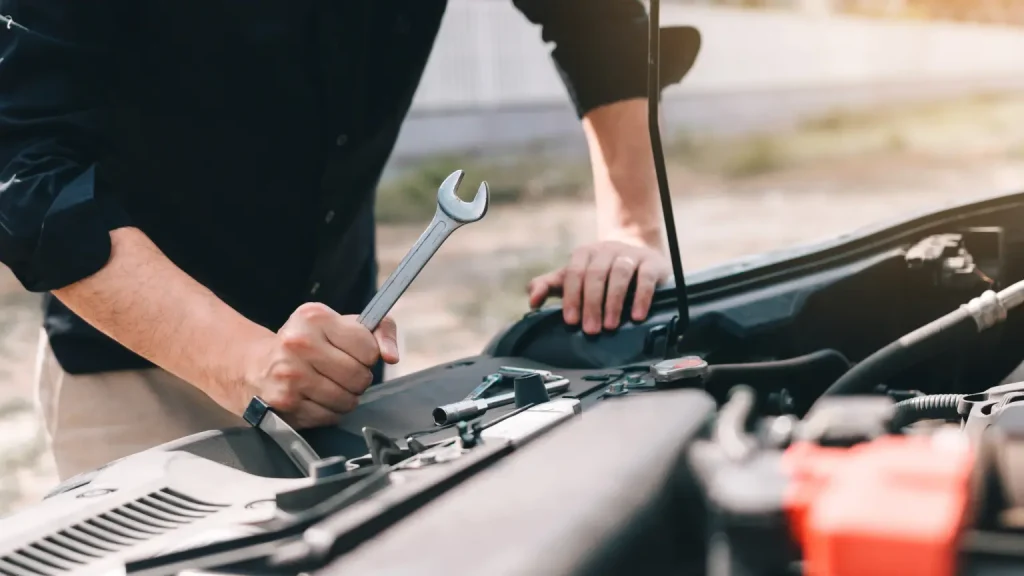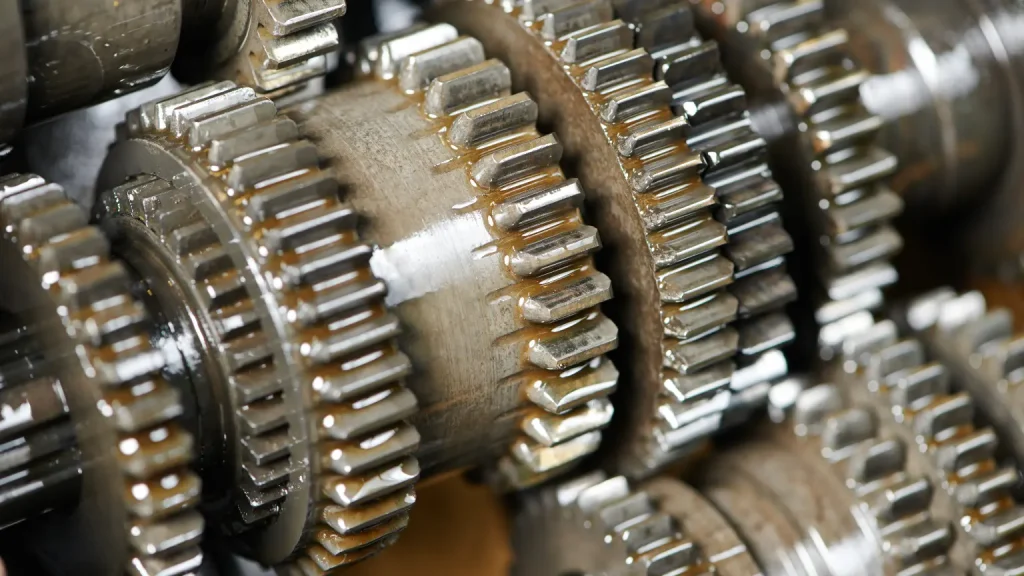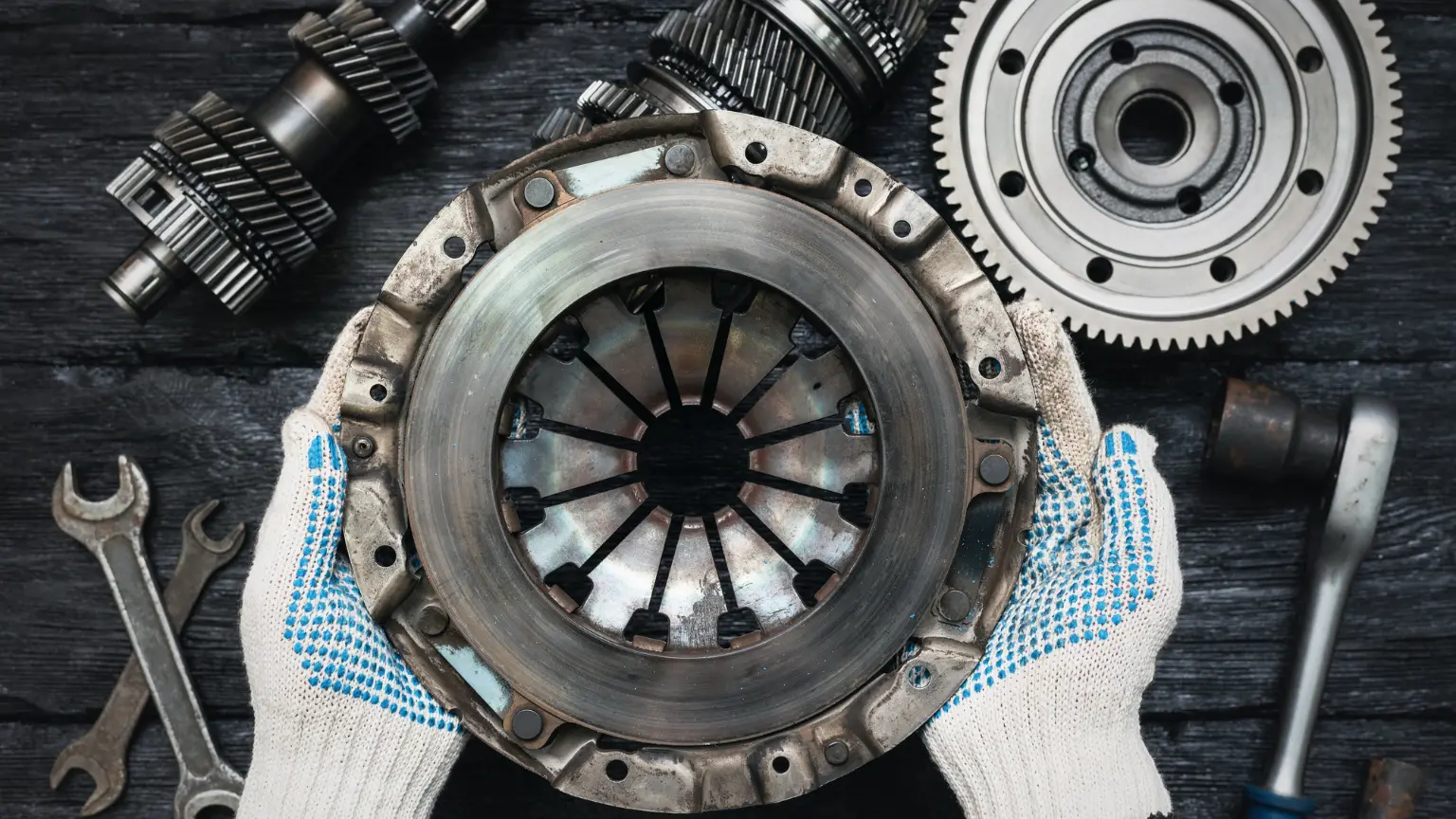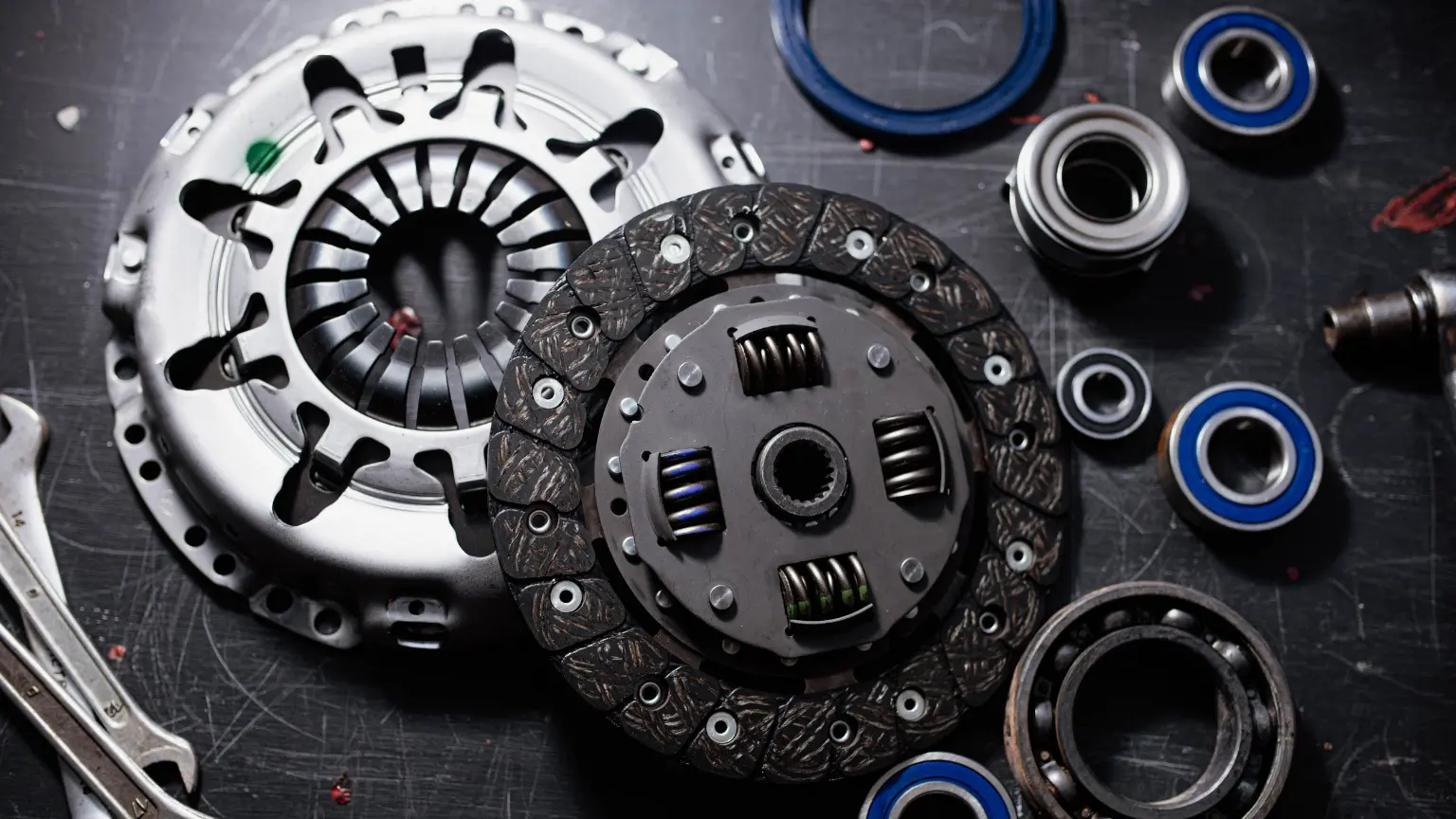Mastering Transmission Issues: Quick Fixes
Explore common transmission issues, from slipping gears and delayed shifts to solenoid failures and overheating, with DIY fixes, maintenance tips, and guidance on seeking pro help.

Transmission problems can occur in any vehicle, often resulting in noticeable performance issues that impact the overall drivability and safety of your car. While both types of transmissions serve the same basic function, the problems with automatic transmission and manual transmission manifest differently. Automatic transmissions may experience delayed gear engagement or fluid leaks, which are less common in manual systems. Conversely, manual transmissions often face issues such as a sticking clutch or difficulty shifting gears, which are not typically seen in automatic systems. Understanding these differences is crucial for fixing transmission problems specific to the type of transmission your vehicle has.
Identifying Common Transmission Problems
The common signs and symptoms that indicate potential transmission issues help vehicle owners identify problems early.

Slipping Gears
When your vehicle's gears slip in and out while driving, it often indicates a serious issue with the transmission. This slipping phenomenon may feel like your car is struggling to maintain speed, or you might hear a high-pitched whining from the engine. It's vital to address these symptoms quickly to prevent further damage. Effective transmission troubleshooting involves checking the transmission fluid for both level and quality, as poor fluid conditions can often contribute to gear slippage.
Delayed Shifts
A delay in gear shifting, especially noticeable when your vehicle first starts moving from a stop, can be frustrating and potentially dangerous. This type of delay, a hallmark of transmission issues, means that the transmission doesn’t engage immediately and instead takes a moment to catch up. Causes can include low fluid levels or a malfunctioning transmission solenoid. Understanding these triggers is essential for timely transmission repair tips that prevent long-term damage to your vehicle.
Unusual Noises
Unusual noises, such as grinding or clunking sounds, coming from the transmission are clear indicators that gearbox issues are at play. These sounds typically occur during gear shifts and may suggest that internal components are worn or damaged.
Transmission Warning Lights
Most modern vehicles are equipped with a transmission warning light on the dashboard, which serves as a critical alert to potential transmission problems. When this light illuminates, it indicates that your vehicle's onboard diagnostic system has detected an anomaly within the transmission. Prompt attention to this warning can lead to a quick transmission repair, often involving a system reset or more detailed diagnostic procedures to pinpoint the exact issue.
Troubleshooting Transmission Issues
Frequent transmission problems, such as leaking fluids, slipping, and overheating.
Transmission Fluid Levels
Low or dirty fluid can cause numerous car transmission repair issues. Regularly checking the fluid level using your vehicle’s dipstick and ensuring the fluid is a clear red, not dark or cloudy, can help avoid these problems. A change of fluid might be necessary if the current state impairs normal transmission function, which is a basic yet crucial transmission repair tip.
Worn-Out Seals and Gaskets
Worn-out seals and gaskets can lead to transmission fluid leaks, resulting in low fluid levels and compromised transmission performance. Inspecting these components during routine maintenance checks can catch leaks early. Suppose a seal or gasket is found to be the source of the leak. In that case, replacing it promptly can prevent more severe transmission problems and safeguard the intricate internal mechanics of your vehicle’s transmission system.
Diagnosing Faulty Solenoids
Transmission solenoids control the flow of fluid throughout the transmission, directly influencing shifting patterns. Faulty solenoids can cause delayed shifts or even prevent the vehicle from moving. Diagnosing these requires a systematic approach:
- Check the Transmission Control Module (TCM): The initial step in diagnosing solenoid issues is to interface with the vehicle's Transmission Control Module using a diagnostic scanner. This module oversees the solenoids' operation and can store specific diagnostic trouble codes (DTCs) when it detects anomalies. By retrieving and analyzing these codes, technicians can determine whether the problem is solenoid-related or if further investigations are needed.
- Measure Electrical Resistance: To further diagnose a solenoid, disconnect its electrical connector and utilize a multimeter to measure its resistance. This test is aimed at ensuring the solenoid's electrical integrity. The resistance reading obtained should align with the manufacturer's specified range. Deviations from these specifications can indicate a malfunctioning solenoid, leading to improper hydraulic fluid control and erratic transmission behavior.
- Perform a Bench Test: Once electrical issues are ruled out, a bench test can be conducted to verify the mechanical functionality of the solenoid directly. This involves applying a specific voltage to the solenoid and observing for a clicking sound, which signifies that the solenoid is mechanically engaging and disengaging as designed. This test simulates the operating conditions of the solenoid within the transmission, providing a reliable indication of its health and responsiveness. This step is essential for confirming the solenoid's ability to manage fluid flow effectively.
Diagnosing transmission solenoids involves a blend of electronic diagnostics and hands-on testing to ensure that each component functions as intended. By methodically checking the Transmission Control Module, measuring electrical resistance, and performing bench tests, technicians can effectively isolate and resolve issues related to transmission solenoids. Regular maintenance, including fluid checks and scheduled inspections, helps prevent transmission failures and extends the system's lifespan.
Transmission Linkage
The linkage that connects your vehicle’s gear shifter to the transmission can sometimes fall out of adjustment, leading to issues like difficulty in changing gears or inaccurate gear selection. Inspecting and adjusting the linkage ensures that shifts occur smoothly and correctly, aligning with the selected gear on the shifter.
Temporary Solutions for Severe Transmission Issues
Reducing Slippage with Additives
For immediate mitigation of gear slippage, transmission additives can be a useful temporary fix. These substances enhance the fluid’s properties to improve grip and prevent the gears from slipping under load. While additives are not a permanent solution, they can help maintain transmission performance in situations where immediate repair isn’t feasible. Regular use of high-quality additives might also slightly extend the lifespan of an aging transmission by reducing stress on critical components.
Improving Performance with Quick Fixes
Sometimes, simple adjustments can significantly enhance the performance of a struggling transmission. Quick fixes like tightening electrical connections, cleaning sensors, and replacing minor worn-out parts like filters can lead to noticeable improvements. These actions, though minor, help maintain an efficient transmission system, postponing the need for more serious repairs and ensuring smoother operation in both automatic and manual transmissions.

Managing Overheating Issues
Addressing this problem effectively involves understanding its causes and implementing preventative measures. Below are details on the essential steps to manage and mitigate overheating in transmissions:
- Enhance Cooling: A crucial step in managing overheating is to check and possibly replace the transmission cooler. An optimal transmission cooler is vital for dissipating heat effectively. During intense vehicle operation, transmission fluid can reach high temperatures, which reduces its efficacy and accelerates wear on the transmission components. A high-quality cooler helps maintain fluid at a manageable temperature, extending the life of the transmission and improving vehicle performance. Ensuring the cooler is free from blockages and damage, and situated in a position that maximizes airflow, can prevent many common overheating issues.
- Upgrade Fluid: Switching to a higher-grade or synthetic transmission fluid can significantly impact the transmission's ability to handle high temperatures. Synthetic fluids are engineered to provide better lubrication and resist breakdown at higher temperatures. This upgrade is particularly beneficial for vehicles that are frequently used under demanding conditions, such as towing or in heavy traffic, where transmissions are prone to overheating quickly. Improved fluid can reduce the frequency and severity of overheating episodes, thus protecting your vehicle's transmission over time.
- Regular Checks: Implementing regular temperature checks as part of your vehicle's routine maintenance can help catch overheating early, preventing damage. Pay particular attention during the warmer months or before embarking on long journeys. An infrared thermometer can be a handy tool for quickly assessing the transmission's temperature without needing physical contact. By regularly monitoring the temperature, you can identify potential overheating problems early and take corrective action promptly.
Mitigating transmission overheating involves a proactive approach to vehicle maintenance. By taking the steps outlined above, you can ensure that your vehicle remains in optimal condition, avoiding the costly repairs and downtime associated with transmission damage.
Preventive Maintenance for Transmission Health
Practical tips and preventive measures that car owners can follow to keep their transmission systems in optimal condition and avoid costly repairs.
Regular Transmission Fluid Checks and Changes
It's recommended to check the fluid level and condition every few months or according to your vehicle's service schedule. Changing the fluid at manufacturer-recommended intervals helps ensure that your transmission operates smoothly and can significantly extend its lifespan.
Common Transmission Damaging Practices
Certain driving habits and maintenance oversights can accelerate the wear and tear on your transmission. Practices such as towing beyond your vehicle’s capacity, neglecting regular maintenance checks, or ignoring early signs of transmission distress can lead to severe transmission problems. Educating yourself about these damaging behaviors and actively avoiding them can go a long way in preserving the health and functionality of your vehicle's transmission.
When to Seek Professional Help
Signs It’s Time for Professional Repair
Persistent issues such as fixing transmission slips, erratic shifting, and frequent overheating are clear indicators that professional repair services are necessary. When transmission solutions do not resolve the irregularities or when the transmission warning lights remain illuminated, these are signals that the problems are beyond basic fixes and require specialized attention. Ignoring these signs can lead to a complete transmission failure, which is far more expensive and complex to repair.
How to Choose a Qualified Transmission Mechanic
Selecting a reliable mechanic for transmission repair requires thoughtful consideration to ensure you receive top-notch service that's worth your investment. Before you begin your search, it’s essential to understand the complexities involved in repairing automotive transmissions and the importance of choosing the right professional for the job:
- Look for Specialized Expertise: A specialist in transmission services is more likely to diagnose issues accurately and provide effective repairs. This expertise is gained through years of focusing solely on transmission diagnosis, which helps in identifying subtle signs of problems that general mechanics might overlook. Specialists are usually up-to-date with the latest technology and techniques in transmission repair, ensuring that your vehicle receives the most current and efficient treatment possible.
- Check Certifications: Ensure that your mechanic has certifications from reputable organizations like the Automatic Transmission Rebuilders Association (ATRA) or the National Institute for Automotive Service Excellence (ASE). These certifications are not just pieces of paper; they indicate that a mechanic has undergone rigorous testing and meets the high standards set by the industry. Mechanics who invest time and resources in obtaining these certifications are more likely to be committed to providing quality service.
- Seek Recommendations: Ask friends, family, or coworkers who have had transmission repairs done for their recommendations. Alternatively, online forums and social media groups dedicated to automotive care can also provide insights into mechanics who have delivered satisfactory services. Recommendations are often more trustworthy as they are based on actual experiences and can give you a clearer picture of what to expect from a service provider.
- Read Reviews: In today’s digital age, online reviews and testimonials are invaluable resources when choosing a service provider. Reading through these reviews can offer a glimpse into the level of customer satisfaction and the quality of repairs conducted. Pay attention to both positive and negative reviews to get a balanced view of the mechanic’s reputation and reliability.
- Compare Prices: While cost should not be the sole factor in choosing a mechanic, it is certainly an important consideration. Obtain quotes from multiple repair shops to understand the price range for the type of repair your vehicle needs. This will help you avoid overcharges and also provide leverage in negotiating prices. However, it's crucial to balance cost with the quality of service. Opting for the cheapest service might lead to subpar repairs that could cost you more in the long run.
- Ask About Warranties: A mechanic who offers a warranty on their repairs demonstrates confidence in their work and commitment to customer satisfaction. Warranties can vary significantly in terms of duration and coverage, so it’s essential to request details upfront. A warranty protects you in case the repair does not hold up as expected, providing peace of mind that your investment is safeguarded.
After following these steps, you’ll be better equipped to select a mechanic who not only offers expertise and value but also provides assurances of quality and durability in their repairs. Make sure your final choice reflects both your immediate repair needs and your long-term expectations for vehicle maintenance.

Understanding when to handle transmission issues yourself and when to seek professional help is crucial. While many minor quick transmission fixes can be DIY, more complex problems require the expertise of a qualified mechanic. Embracing this balance can save you both time and money, ensuring that your vehicle remains in optimal condition. Remember, addressing transmission issues promptly and effectively is not just about repairs. It's about maintaining the integrity and longevity of your vehicle's entire operating system. For expert diagnostics and repairs, call Trans Medic Transmission to keep your transmission performing reliably.
Sources:
- Trans Medic Transmissions. (2023, November 17). Fixing a slipping transmission: Expert tips. https://www.greshamtransmedic.com/blog/fixing-a-slipping-transmission-expert-tips
- Trans Medic Transmissions. Transmission repairs & rebuilds. https://www.greshamtransmedic.com/services/transmission-repairs-rebuilds
Follow a maintenance program
Ante gravida id aenean quis egestas risus nam amet nullam leo diam diam aliquam eu eu malesuada arcu rhoncus suspendisse nulla mattis ut amet sagittis in justo egestas.

search for a trusted mechanic
Lorem ipsum dolor sit amet, consectetur adipiscing elit lobortis arcu enim urna adipiscing praesent velit viverra sit semper lorem eu cursus vel hendrerit elementum morbi curabitur etiam nibh justo, lorem aliquet donec sed sit mi dignissim at ante massa mattis.
- Neque sodales ut etiam sit amet nisl purus non tellus orci ac auctor
- Adipiscing elit ut aliquam purus sit amet viverra suspendisse potent
- Mauris commodo quis imperdiet massa tincidunt nunc pulvinar
- Excepteur sint occaecat cupidatat non proident sunt in culpa qui officia
Check the air pressure in your tires
Vitae congue eu consequat ac felis placerat vestibulum lectus mauris ultrices cursus sit amet dictum sit amet justo donec enim diam porttitor lacus luctus accumsan tortor posuere praesent tristique magna sit amet purus gravida quis blandit turpis.
Review your suspension frequently
At risus viverra adipiscing at in tellus integer feugiat nisl pretium fusce id velit ut tortor sagittis orci a scelerisque purus semper eget at lectus urna duis convallis. porta nibh venenatis cras sed felis eget neque laoreet suspendisse interdum consectetur libero id faucibus nisl donec pretium vulputate sapien nec sagittis aliquam nunc lobortis mattis aliquam faucibus purus in.
- Neque sodales ut etiam sit amet nisl purus non tellus orci ac auctor
- Adipiscing elit ut aliquam purus sit amet viverra suspendisse potent
- Mauris commodo quis imperdiet massa tincidunt nunc pulvinar
- Excepteur sint occaecat cupidatat non proident sunt in culpa qui officia
Service your vehicle as regularly as posible
At risus viverra adipiscing at in tellus integer feugiat nisl pretium fusce id velit ut tortor sagittis orci a scelerisque purus semper eget at lectus urna duis convallis. porta nibh venenatis cras sed felis eget neque laoreet suspendisse interdum consectetur libero id faucibus nisl donec pretium vulputate sapien nec sagittis aliquam nunc lobortis mattis aliquam faucibus purus in.
“Nisi quis eleifend quam adipiscing vitae aliquet bibendum enim facilisis gravida neque velit euismod in pellentesque”
Conclusion
Eget lorem dolor sed viverra ipsum nunc aliquet bibendum felis donec et odio pellentesque diam volutpat commodo sed egestas aliquam sem fringilla ut morbi tincidunt augue interdum velit euismod eu tincidunt tortor aliquam nulla facilisi aenean sed adipiscing diam donec adipiscing ut lectus arcu bibendum at varius vel pharetra nibh venenatis cras sed felis eget.


